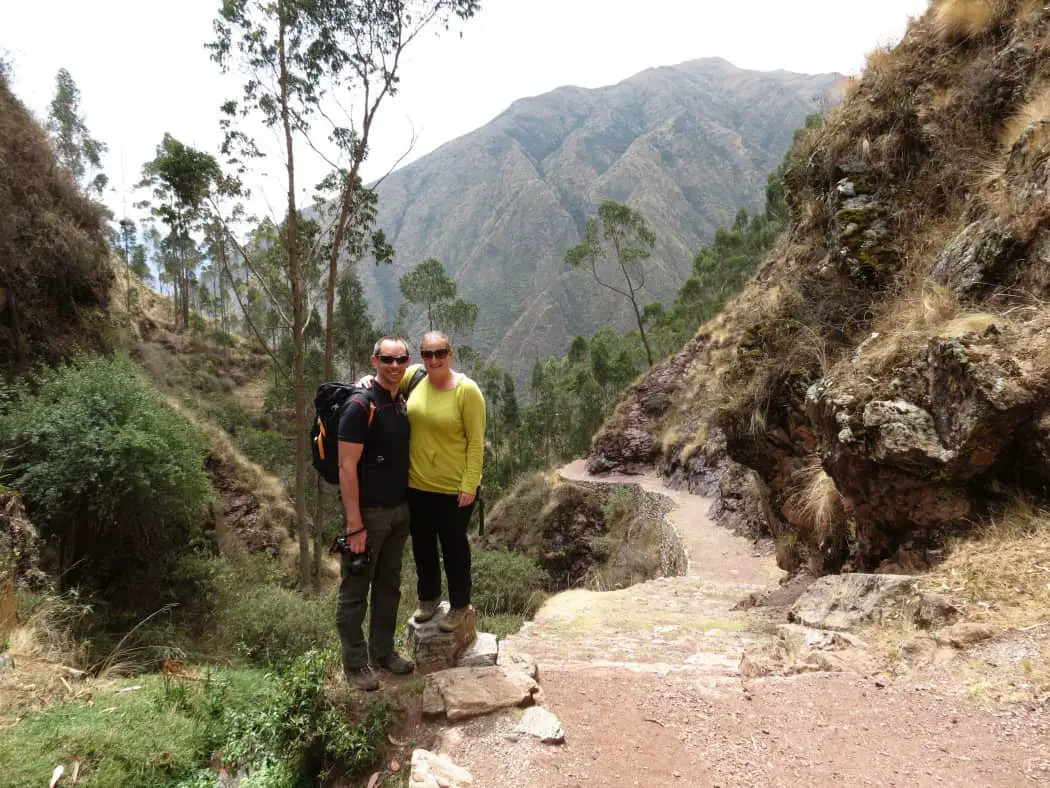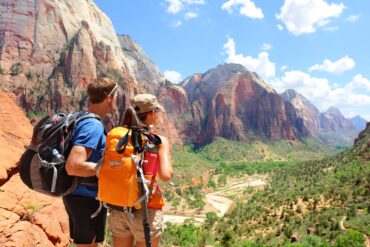Hiking has always been a huge part of our travels, whether we’re exploring the glorious national parks here in the UK, or adventuring around remote mountains and lakes overseas. There’s no better feeling than reaching hilltop summits or breathtaking overlooks under your own steam – the rewards are well worth all that effort. It’s also a great way of keeping fit on holiday, as well as perfect for escaping the crowds, especially in the popular summer months.
If you want to go hiking on your travels, it’s important to go prepared to make sure you’re safe and comfortable out in the wilds. There are several essential bits of kit that we always take when we go away, so that we have all the gear we need if we decide to head for the hills. Here’s what we suggest you pack for your own hiking holidays:
Hiking Boots
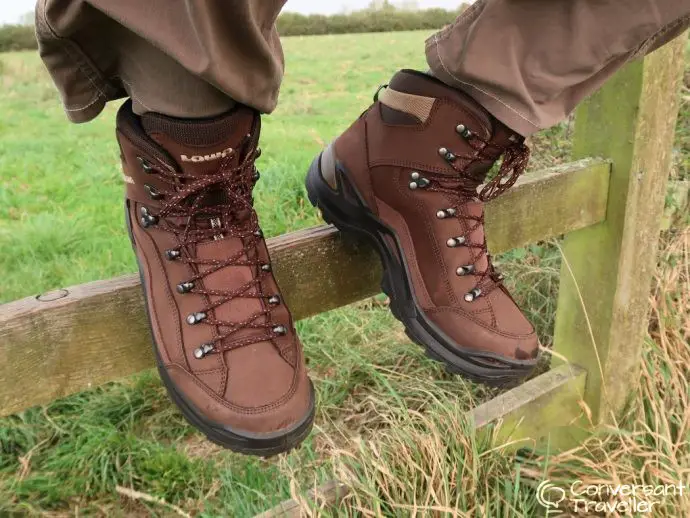
Some walks can easily be enjoyed in a comfy pair of trainers, but for the more serious stuff, it’s important to get your footwear right. We always wear hiking boots when we’re traversing rough or boggy terrain, to help protect our feet and give us better grip. We recommend getting Gore-Tex boots as this fabric is both waterproof and breathable.
Getting boots that fit well is super important when you’re hiking. You don’t want to be stuck up a peak with sore feet and blisters just because you don’t have the right footwear. Of course, feet are all different, which can make it difficult to find the right boots. One trick we’ve learned over the years is to use insoles. They add an extra layer of comfort for your feet, and can be used in all types of boots and shoes, which is great news when it comes to high-impact hiking. You can get them online from companies like ZeroSole, and many can be fully customised to your foot to relieve pressure from sore points like blisters. Insoles can also help with conditions like Achilles tendonitis, plantar fasciitis, and even posture-related back pain, which means you don’t have to miss out on hikes after all.
One further bit of advice when it comes to hiking boots is that you shouldn’t just buy a new pair of boots and tackle a mountain without breaking them in first. They’ll be stiff to start with, and it takes time for them to mold themselves to your feet. Wear them around the house for a few days, then try a few shorter local walks to help your feet get used to the boots before heading out for bigger adventures.
Rucksack
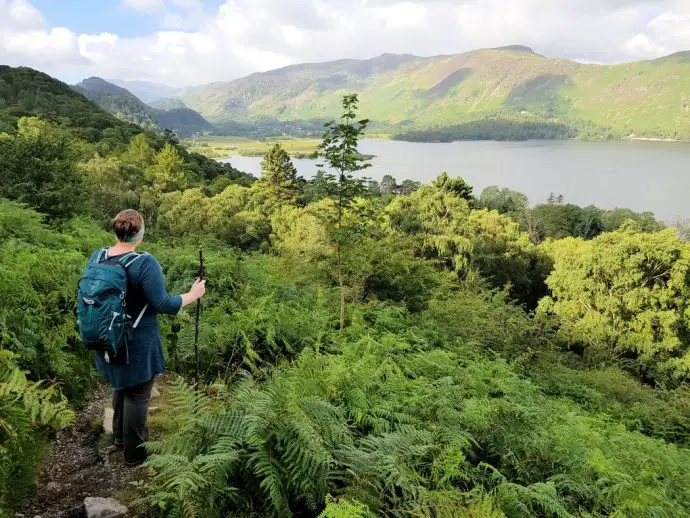
A rucksack is another essential bit of kit you’ll need if you’re planning on going for a longer hike. You’ll need to carry several other pieces of gear with you, so will of course need somewhere to store them. The backpack doesn’t need to be a well-known brand, so you won’t need to spend a lot of money. Just get something comfortable, with waist straps to help spread out the load and reduce the burden on your shoulders.
For a day hike, we find that a 20-30 litre rucksack does the job. It’s big enough to carry water, lunch, waterproofs and a first aid kit. For longer, overnight hikes, you’ll want something bigger. When we go off wild camping in the Lake District, we take 60-70 litre rucksacks. They’re not massive, but they are big enough to carry everything from tents and lightweight sleeping bags, to a camp stove and food.
Ladies, remember that not all rucksacks are designed to comfortably fit the female figure, so look for brands that specifically offer backpacks for women. I find these fit much better than unisex backpacks, especially around the hips and chest. They often have shorter lengths which are better for those of us with shorter torsos.
Navigation Gear
You should never attempt a wilderness or mountain hike without proper navigational gear. This basically means you need to take a map and compass, which will help keep you on the right track, and assist if you do happen to get lost. You should always carry a whistle too, which can be used if you find yourself in need of help. Six blasts on the whistle at regular intervals is the international distress signal, and often used by hikers in emergencies.
Of course, it’s important to know how to read a map and use a compass, otherwise they won’t be much use. So, if you’re not familiar with these, make sure you learn about them before heading out. There are lots of courses, both practical outdoor ones and online ones that will get you started. If you’re new to navigation, do some practice runs in your local area to help refine your skills. That way, when you’re up in the peaks on a foggy day, you’ll know exactly how to navigate to safety.
It’s important to note that while mobile phones can be great navigational tools, and there are many map apps that are great for hiking, you shouldn’t rely solely on this. Batteries die, screens can become damaged, or the technology may simple fail. Because of this, you need a physical back up in the form of an old-school paper map (we tend to use the Ordnance Survey ones).
Weather Appropriate Clothing
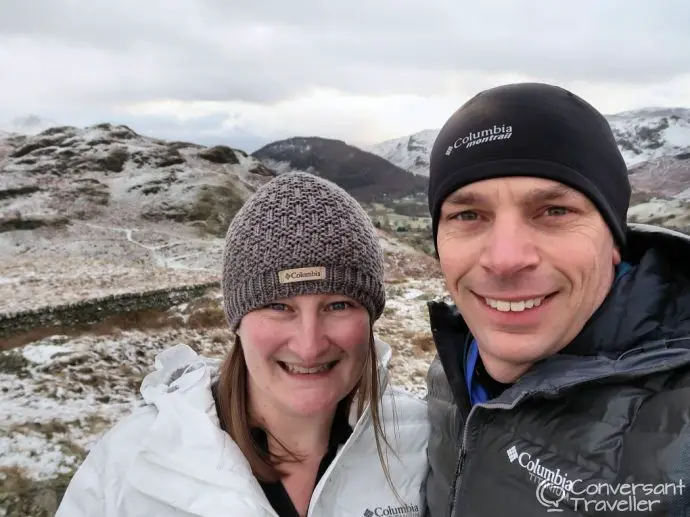
One of the most important things to take hiking is clothing that is suitable for the weather conditions. We love layers, as we can peel them off when it gets hot, and add on more when it becomes cold. Buy moisture wicking items if you can, as this will help regulate your temperature, and avoid unnecessary sweating, which can make you cold at higher altitudes.
Waterproofs are essential too, even if it’s sunny and dry when you depart. Weather can change in an instant, especially in the hills, so it’s important to go prepared for every eventuality. You should take both a waterproof jacket and waterproof trousers. Again, we love Gore-Tex as it’s breathable and helps prevent moisture from building up inside your jacket from the heat of your body.
If you’re hiking in the colder months, consider taking gloves and a hat to keep warm. Temperatures fluctuate greatly with height gain, and the wind chill adds an extra element of cold. I carry two pairs of gloves in winter, including a thin, thermal pair to wear underneath my regular gloves. Having cold fingers out in the mountains isn’t much fun, so don’t leave home without your gloves!
Don’t Forget Your Watch
When heading off on a walk, a reliable watch is an essential bit of kit that’s often overlooked. Not only does it help you keep track of time, but many modern hiking watches come equipped with GPS, altimeters, and weather tracking features, which can be incredibly useful in remote areas. Make sure your watch band is durable and comfortable, especially for long hikes, as you don’t want it to cause discomfort while you’re out in the wild.
In addition to timekeeping, some watches can track your steps, heart rate, and elevation, helping you monitor your fitness levels during strenuous hikes. Whether you’re summiting a mountain or exploring a forest trail, a good hiking watch can be a handy companion to ensure you stay on track and safe during your adventure.
Water and Snacks
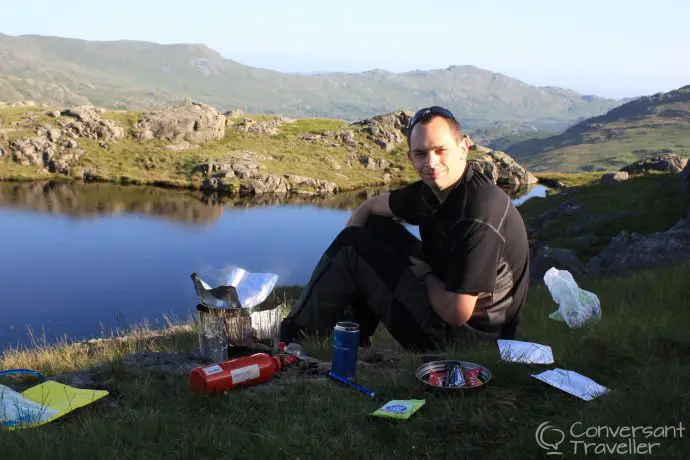
Even if you’re not planning on being out for hours, you should always take some hiking food with you. This will give you a much needed energy boost whilst you’re out and about, and if you do get stuck and end up needing help, you’ll have a bit of food to sustain you during your wait. Take high energy snacks like cereal bars, bananas, or dried fruits.
If you’re camping out and need to take dinner with you, remember that space is at a premium in your rucksack, so you’ll need small, lightweight foods. We love the specially designed dehydrated camp food packs that you can pick up from most outdoor shops. All you need to do is add water, which you can take with you, or get from a stream if you have a filter. Alternatively, things like noodles work well and are quick to cook over your camp stove.
Water is the most important thing to take, so make sure you carry enough for your whole day, and remember to drink regularly. We use hydration bladders, which fit conveniently down the back of our rucksacks, with a flexible rubber tube for drinking that’s attached to our shoulder straps. It’s a great way to take regular sips whilst walking, without having to stop to unpack a bottle.
Final Thoughts
There are many more items to consider taking with you on a hike, but these are the main essentials. Heading off into the mountains or forests for a long walk doesn’t need to be daunting, and if you have all the right kit, it can be one of the most enjoyable things you do on your holiday.

